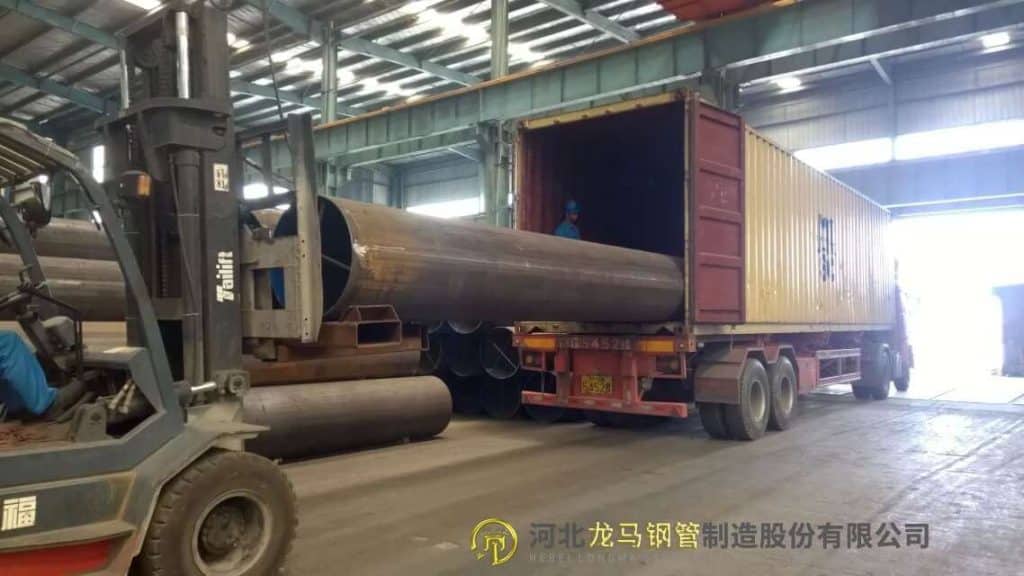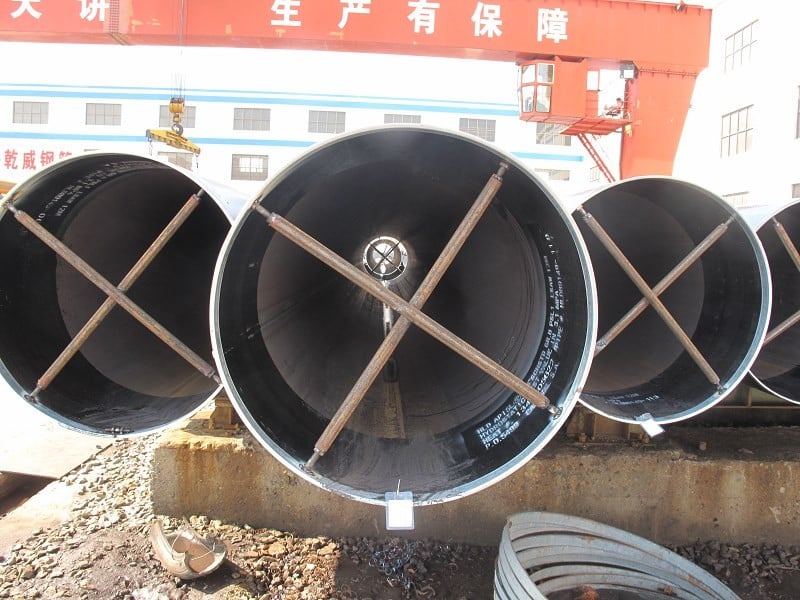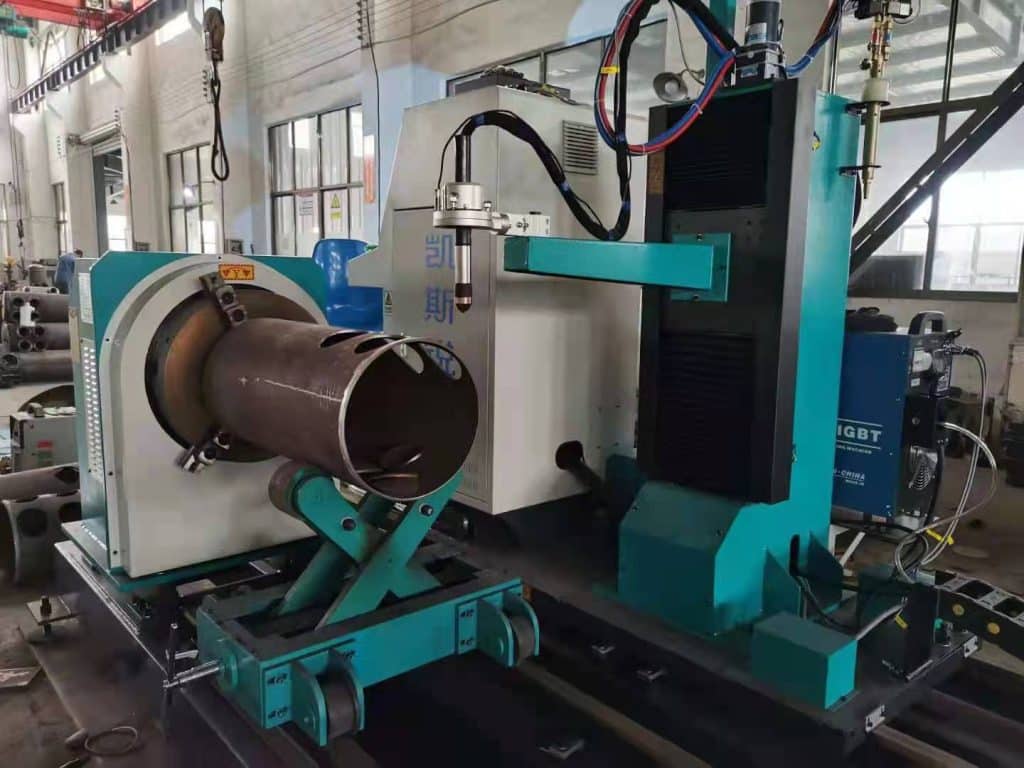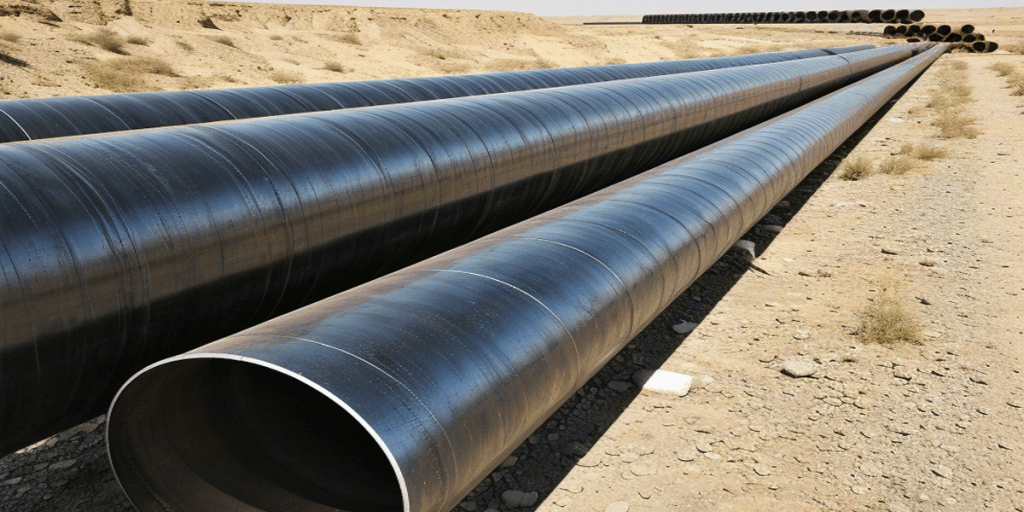- 1. Overview of FBE Coating Pipe
- 2. Corrosion Challenges and Protection Needs in Oil and Gas Transportation Pipelines
- 3. Corrosion Protection Advantages of FBE Coating Pipe
- 4. Practical Applications of FBE Coated Steel Pipes in the Oil and Gas Industry
- 5. Comparison Between FBE Coating and 3PE Coating (Point-by-Point Analysis)
- 6. Service Life and Maintenance of FBE Coating Pipes
As global energy demand continues to rise, oil and gas transportation pipelines play a critical role in the transmission of energy. However, over time, pipelines are vulnerable to corrosion, wear, and other environmental factors, leading to reduced transport efficiency and potential safety hazards such as leaks. To address these challenges, the application of FBE (Fusion Bonded Epoxy) coating pipes has become a key technology in the industry for corrosion protection. FBE-coated pipes not only offer exceptional corrosion resistance but also significantly extend the lifespan of pipelines, reduce maintenance costs, and are increasingly favored in oil and gas pipeline construction worldwide! In this article, we will explore the corrosion protection applications of FBE-coated pipes in oil and gas transportation pipelines, examine their technological advantages, and discuss how adopting this advanced corrosion protection technology can enhance pipeline safety and durability in line with current industry trends!
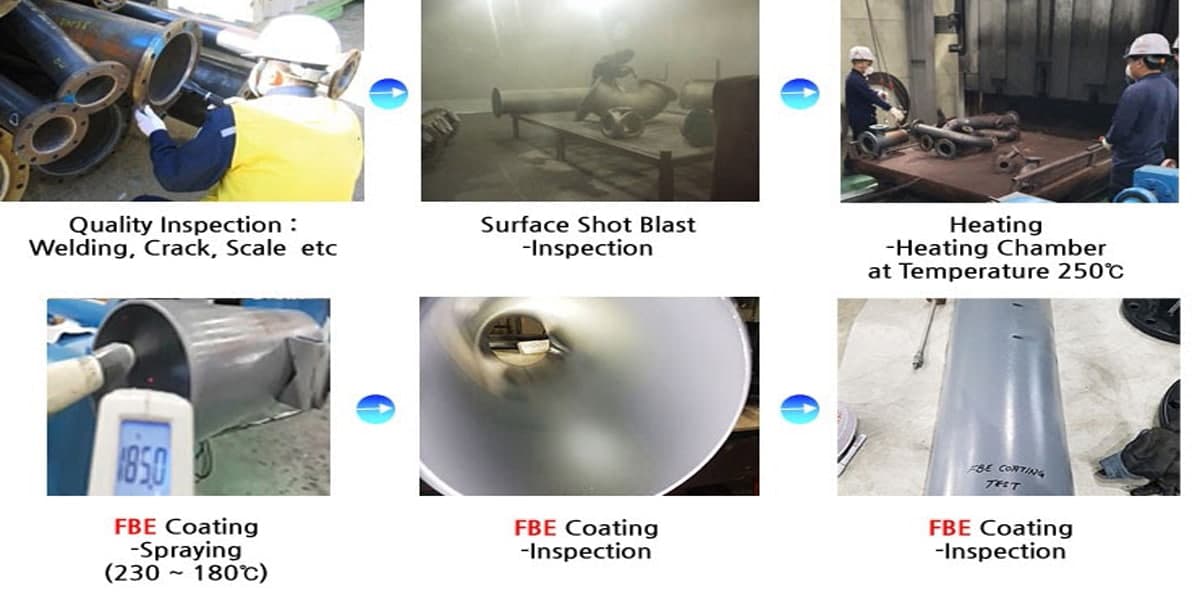
Overview of FBE Coating Pipe
FBE (Fusion Bonded Epoxy) coated pipes are pipes that are protected by a coating of epoxy powder applied through a fusion bonding process. This type of coating is widely used in oil and gas transportation pipelines, water pipelines, chemical pipelines, and other industries to effectively protect pipes from damage due to corrosion, wear, and other environmental factors, ensuring their long-term safe operation.
1. Coating Principle
The FBE coating process involves heating epoxy resin powder to a molten state, then applying it evenly to the surface of the pipe. The coating is then cured by heat to form a dense protective layer. This coating provides excellent adhesion, corrosion resistance, and abrasion resistance, effectively preventing external environmental damage to the pipe.
2. Technical Features
Strong Corrosion Resistance: FBE coatings offer excellent resistance to chemical corrosion, especially in highly corrosive environments.
Good Mechanical Properties: The coating has strong impact resistance and abrasion resistance, allowing it to withstand various physical and mechanical stresses.
High Thermal Stability: FBE coatings can withstand high temperatures, making them suitable for use in hot environments.
Environmentally Friendly: FBE coatings are made from eco-friendly epoxy resin, which meets environmental standards and does not contain harmful substances.
3. Applications
FBE coated pipes are widely used in industries such as oil and gas, water treatment, chemicals, and mining. They are especially prevalent in oil and gas transportation pipelines. Due to their excellent corrosion resistance, FBE coated pipes can significantly extend the lifespan of pipelines, reduce maintenance costs, and improve pipeline reliability and safety.
4. Advantages
Extended Pipe Lifespan: The coating provides effective protection against environmental and chemical corrosion, extending the service life of the pipe.
Reduced Maintenance Costs: The protective coating reduces maintenance and replacement work caused by corrosion, lowering overall operational costs.
Increased Safety: FBE coated pipes offer superior corrosion resistance, reducing the risk of leaks and bursts, ensuring transportation safety.
5. Technological Development Trends
With the rapid development of the oil and gas industry, the demand for pipeline corrosion protection technologies continues to grow. As manufacturing processes improve, the performance of FBE coatings, including coating thickness, adhesion, and durability, is constantly advancing. In the future, FBE coated pipes will find broader applications in more extreme environments, particularly in oil and gas transportation in harsh climates, marine environments, and high-corrosion areas.
6. Relevant Standards
1. NACE RP0394: This standard from the National Association of Corrosion Engineers (NACE) focuses on the quality control and inspection of FBE coatings. It includes guidelines for proper coating application, testing methods like Holiday Testing (electrical inspection for defects), and ensuring the coating provides long-term corrosion protection.
2. CSA Z245.20: The Canadian Standards Association (CSA) provides this standard, which covers the external coating of oil and gas pipelines, including FBE coatings. It sets requirements for coating thickness, adhesion strength, and corrosion resistance, and outlines the necessary quality control measures during the application process.
3. ISO 21809-2: This international standard from ISO focuses on the coating of pipes used in oil and gas pipelines. It specifies performance requirements for FBE coatings, including their resistance to corrosion, temperature changes, and mechanical damage. It also covers the proper application and inspection methods for ensuring high-quality coatings.
4. ASTM A775/A775M: This ASTM standard is aimed at coating materials for steel pipes, including FBE coatings. It outlines requirements for coating thickness, adhesion, and quality control, and recommends tests such as Holiday Testing to check for defects and ensure coating integrity.
5. API 5L: API 5L is a standard from the American Petroleum Institute that specifies the requirements for steel pipes used in oil and gas pipelines, including coatings like FBE. It includes guidelines for coating thickness and testing methods to ensure the coatings provide reliable protection against corrosion.
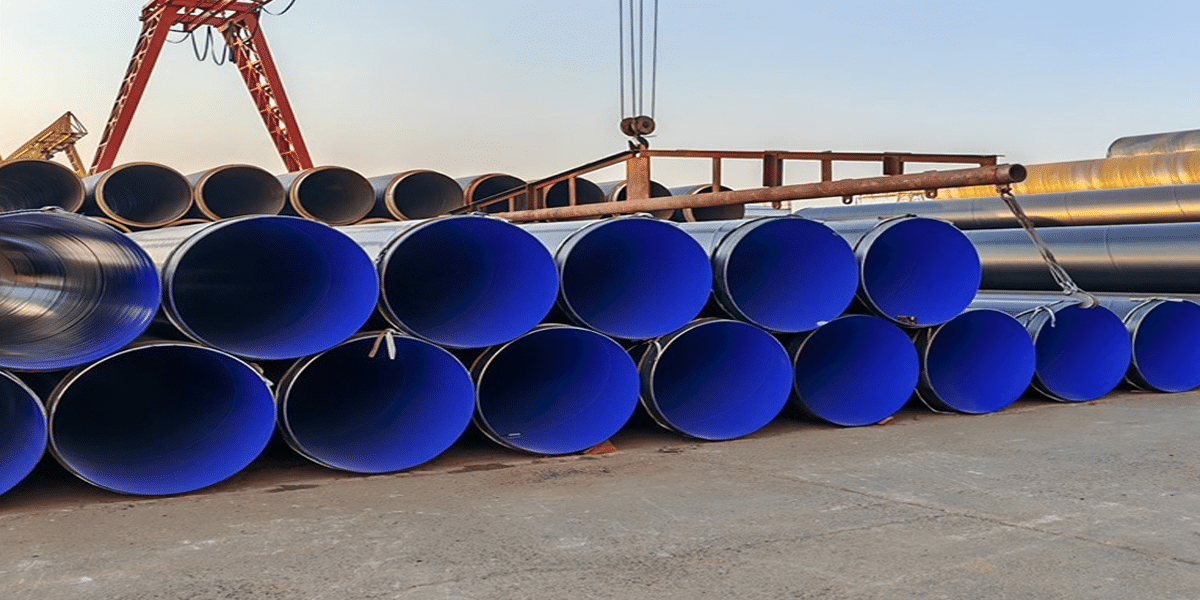
Corrosion Challenges and Protection Needs in Oil and Gas Transportation Pipelines
Oil and gas transportation pipelines are vital infrastructure for the global energy supply chain. However, due to their long service life and exposure to harsh environmental conditions, these pipelines are highly susceptible to various forms of corrosion. Addressing corrosion effectively is not only essential for maintaining the safety and integrity of the pipeline system but also for reducing operational costs and environmental risks.
Common Corrosion Challenges:
1.External Corrosion: Caused by moisture, soil conditions, and stray currents in the environment, external corrosion can lead to gradual thinning of pipeline walls and eventually cause leaks or ruptures.
2. Internal Corrosion: Occurs due to the presence of water, hydrogen sulfide (H₂S), carbon dioxide (CO₂), and other corrosive agents in the transported fluids. This type of corrosion can significantly weaken the pipe from within.
3. Microbiologically Influenced Corrosion (MIC): Bacteria and other microorganisms can accelerate corrosion through biochemical reactions, especially in wet or anaerobic environments.
4. Stress Corrosion Cracking (SCC): A dangerous form of localized corrosion that occurs when tensile stress and corrosive conditions act together, potentially leading to sudden pipeline failure.
Protection Needs and Industry Demands:
1. Reliable Long-Term Corrosion Protection: Pipelines need durable coatings and materials that can withstand years of exposure to aggressive environments without degradation.
2. Cost-Effective Maintenance: Minimizing the need for frequent inspections, repairs, or replacements helps reduce operating expenses and downtime.
3. Enhanced Safety and Environmental Compliance: Preventing corrosion-related failures is essential for avoiding spills, explosions, and regulatory penalties.
4. Adaptability to Harsh Environments: Pipelines often operate in deserts, underwater, or permafrost areas, requiring advanced protective solutions tailored to specific challenges.
5. Compatibility with Inspection and Monitoring Systems: Modern pipeline systems require protective technologies that allow accurate inline inspections and integrity monitoring over time.×
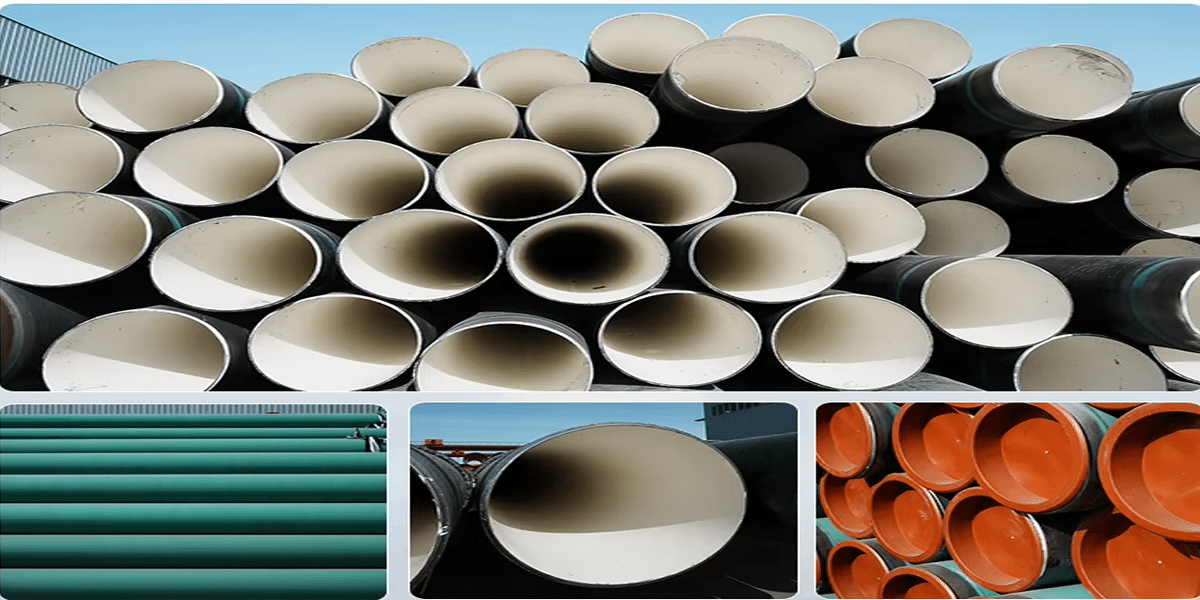
Corrosion Protection Advantages of FBE Coating Pipe
Fusion Bonded Epoxy (FBE) coating has become one of the most reliable and widely used anti-corrosion solutions in the oil and gas pipeline industry. Its superior performance in resisting various forms of corrosion makes it a preferred choice for pipeline protection under both onshore and offshore conditions.
Key Corrosion Protection Advantages of FBE Coating Pipe:
1. Excellent Adhesion to Steel Surface: FBE coatings form a strong chemical bond with the steel substrate, ensuring high adhesion that resists disbondment even under high pressure and temperature conditions. This tight adhesion provides a seamless barrier that effectively isolates the metal from corrosive agents.
2. Superior Resistance to Chemical Corrosion: FBE coatings are highly resistant to acids, alkalis, salts, and other chemicals commonly encountered in oil and gas environments. This chemical resistance helps protect the pipe interior and exterior from aggressive media that would otherwise lead to rapid degradation.
3. High Resistance to Moisture and Water Permeation: The dense cross-linked structure of cured epoxy significantly reduces water absorption and prevents moisture ingress, which is a major factor in both external and internal corrosion processes.
4. Thermal Stability and Long-Term Durability: FBE coatings maintain their protective properties across a wide temperature range, making them suitable for high-temperature oil and gas transport. They also resist UV exposure and aging, providing long-term protection without significant degradation.
5.Impact and Abrasion Resistance: The mechanical strength of the FBE layer protects the pipe from physical damage during handling, transportation, and installation. This durability minimizes the risk of coating failure and ensures consistent protection throughout the pipeline’s operational life.
6. Environmentally Friendly Coating Option: FBE coatings are solvent-free and produce minimal emissions during application. They meet stringent environmental and safety standards, making them a greener alternative compared to some traditional coating methods.
7. Compatibility with Multi-Layer Coating Systems: FBE can be used as a base layer in multi-layer coating systems (e.g., FBE + adhesive + polyethylene) for added mechanical protection and corrosion resistance in harsh environments like subsea or rocky terrain.
Practical Applications of FBE Coated Steel Pipes in the Oil and Gas Industry
Fusion Bonded Epoxy (FBE) coated steel pipes are widely recognized for their excellent corrosion resistance and mechanical durability, making them ideal for use in various critical areas of the oil and gas sector. These pipes are especially valued in environments that demand long-term reliability, high resistance to harsh conditions, and low maintenance.
1. Onshore Long-Distance Oil and Gas Transmission Pipelines: FBE coated pipes are extensively used in cross-country pipelines that traverse deserts, grasslands, and permafrost regions. Their resistance to moisture, extreme temperatures, and UV exposure ensures long-term protection and minimizes the need for frequent maintenance.
2. Subsea Pipelines and Offshore Platform Connections: Marine environments pose significant corrosion risks due to high salinity and pressure. FBE coatings serve as a base layer in multi-layer systems (such as 3LPE or 3LPP) used for subsea pipelines and offshore platform connections. This setup provides excellent resistance to seawater and electrochemical corrosion.
3. Gathering and Processing Facilities: In oil and gas stations—such as gathering stations and compressor stations—where pipelines are subject to fluctuating environmental and operational conditions, FBE coated pipes offer stable and reliable protection, reducing failure risks during repeated start-up and shutdown cycles.
4. Oil Well Tubing and Casing Exterior Protection: corrosive media such as hydrogen sulfide (H₂S), carbon dioxide (CO₂), and brine. FBE coatings on the exterior of tubing and casing provide essential corrosion protection, helping extend the life of the well and reduce maintenance needs.
5. Urban Natural Gas Distribution Networks: In municipal gas systems, FBE coated pipes are often used in medium to high-pressure gas distribution pipelines. Their environmental friendliness, strong adhesion, and resistance to stray current corrosion make them a safe and dependable choice for underground infrastructure.
Comparison Between FBE Coating and 3PE Coating (Point-by-Point Analysis)
1. Structure Composition
FBE Coating: A single-layer coating made of fusion bonded epoxy powder, directly applied and cured onto the pipe surface.
3PE Coating: A three-layer system consisting of a fusion bonded epoxy base layer, a copolymer adhesive middle layer, and a polyethylene outer layer for mechanical protection.
2. Corrosion Protection Performance
FBE: Offers excellent chemical resistance and strong adhesion, protecting against moisture, salts, acids, and other corrosive agents.
3PE: Provides superior comprehensive protection. The epoxy layer ensures corrosion resistance while the polyethylene layer blocks moisture and oxygen, making it ideal for buried and humid environments.
3. Mechanical Strength and Impact Resistance
FBE: Has moderate mechanical strength. However, due to the relatively thin coating, it provides limited physical protection.
3PE: Features a thick polyethylene outer layer that delivers high impact resistance and abrasion protection, suitable for rough terrains and demanding handling conditions.
4. Thermal Resistance
FBE: High thermal stability; standard FBE coatings withstand temperatures up to 110–120°C, with some advanced types tolerating even higher temperatures.
3PE: Generally tolerates up to 85–100°C. Its performance may decline in high-temperature environments.
5.Application and Installation Process
FBE: The coating process is relatively simple and supports efficient, automated large-scale production.
3PE: More complex to apply, requiring specialized equipment and precise control of each layer, resulting in higher installation time and cost.
6. Typical Applications
FBE: Suitable for short- to medium-distance pipelines, above-ground stations, urban gas distribution systems, and external casing for oil wells.
3PE: Ideal for long-distance transmission pipelines, underground or subsea installations, and environments demanding high mechanical protection.
7. Environmental Considerations
FBE: Solvent-free and eco-friendly, making it a cleaner option for coating facilities.
3PE: May release emissions during the polyethylene melting process, posing slightly higher environmental concerns.
Service Life and Maintenance of FBE Coating Pipes
FBE (Fusion Bonded Epoxy) coating pipes are widely used in oil and gas transportation pipelines due to their excellent corrosion protection performance. However, their service life and maintenance are crucial to ensure long-term reliability and performance. Below is an analysis of the service life of FBE coating pipes and key maintenance points.
Service Life of FBE Coating Pipes
1. Corrosive Environment: Under normal conditions, FBE coating pipes typically have a service life of 30 years or more, especially in neutral or mildly corrosive environments. The corrosion protection capability effectively extends the lifespan of the pipeline. However, in highly corrosive environments, the performance of the coating may gradually decline, which can impact the pipeline’s service life.
2. Construction Quality: The integrity and adhesion of the coating directly affect the service life of the pipe. During the construction process, controlling the uniformity, thickness, and curing of the coating is critical. Poor construction quality can result in coating cracks or delamination, leading to reduced corrosion protection and ultimately shortening the pipeline’s life.
3, External Mechanical Damage: While FBE coatings offer some resistance to mechanical impact, significant external mechanical damage during construction or later operation may cause the coating to rupture, exposing the steel pipe and accelerating corrosion.
4. Temperature and Pressure Conditions: FBE coatings generally tolerate temperatures up to 110-120°C. Prolonged exposure to temperatures beyond the coating’s tolerance range can degrade the coating and reduce its protective performance.
Maintenance Key Points for FBE Coating Pipes
To extend the service life of FBE coating pipes and ensure long-term corrosion protection, the following maintenance measures are essential:
1. Regular Inspections and Monitoring: Regular inspection of the pipeline coating, especially at vulnerable areas such as joints and bends, is essential to detect any wear, cracking, or delamination of the coating. Techniques like visual inspection, coating thickness measurements, and ultrasonic testing can be used for comprehensive evaluation.
2. Prevention of External Damage: During pipeline operation, especially for buried sections, external mechanical impacts, compression, or other physical damages should be avoided. If any damage to the coating is discovered, immediate repair should be conducted.
3. Coating Repair and Maintenance: If any coating defects are found, prompt repair is necessary. Repair materials should be compatible with the original coating to ensure consistent corrosion protection. Specialized repair coatings can be used to restore the damaged area and prevent moisture and air infiltration that could lead to steel corrosion.
4. Environmental Control Around the Pipeline: In harsh environments, particularly in humid, saline, or marine areas, additional corrosion protection measures should be taken. This could include the application of extra protective layers or coatings to strengthen the pipeline’s resistance to corrosion.
5. Temperature and Pressure Monitoring: Monitoring the temperature and pressure of the pipeline is essential to avoid prolonged exposure to temperatures that exceed the FBE coating’s tolerance limit. In high-temperature environments, specialized high-temperature FBE coatings should be considered for enhanced protection.
In summary, FBE coating pipes offer exceptional corrosion protection and are a vital solution for ensuring the durability and reliability of oil and gas transportation pipelines. Their service life can extend for decades if properly maintained, with regular inspections, prompt repairs, and protective measures in place to address external damage and harsh environmental factors. By understanding the factors that influence the service life of FBE coating pipes and implementing the appropriate maintenance strategies, operators can maximize pipeline longevity, minimize downtime, and enhance the overall safety and efficiency of their infrastructure.
If you have any questions or need further assistance regarding FBE coating pipes, our team of experts is here to help. Please feel free to contact us for more information or personalized guidance on your pipeline projects!


